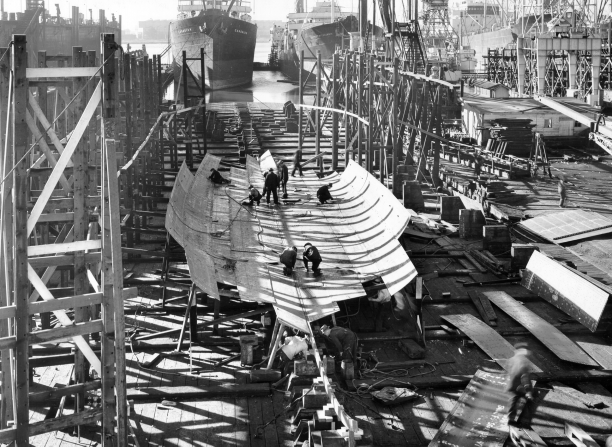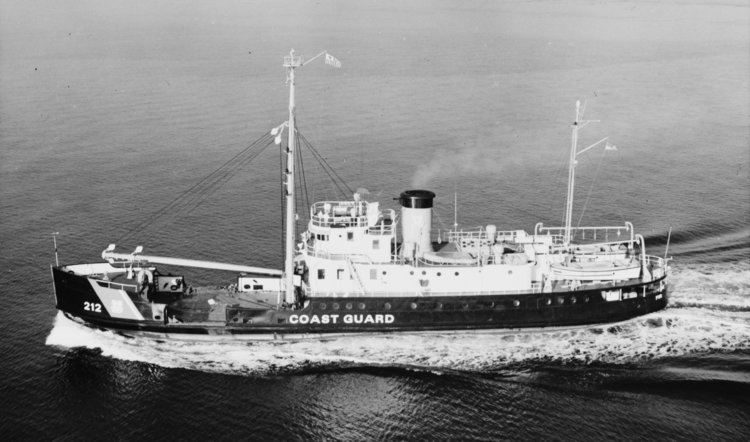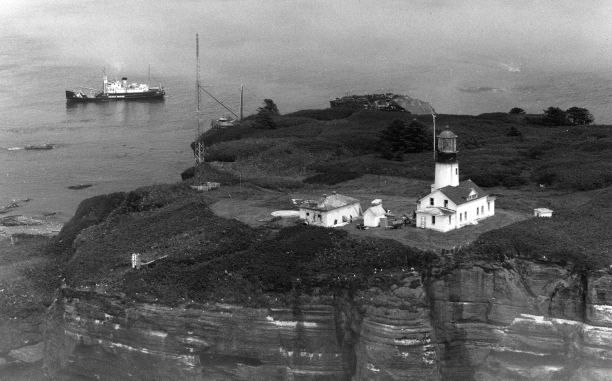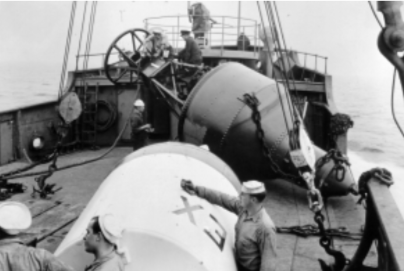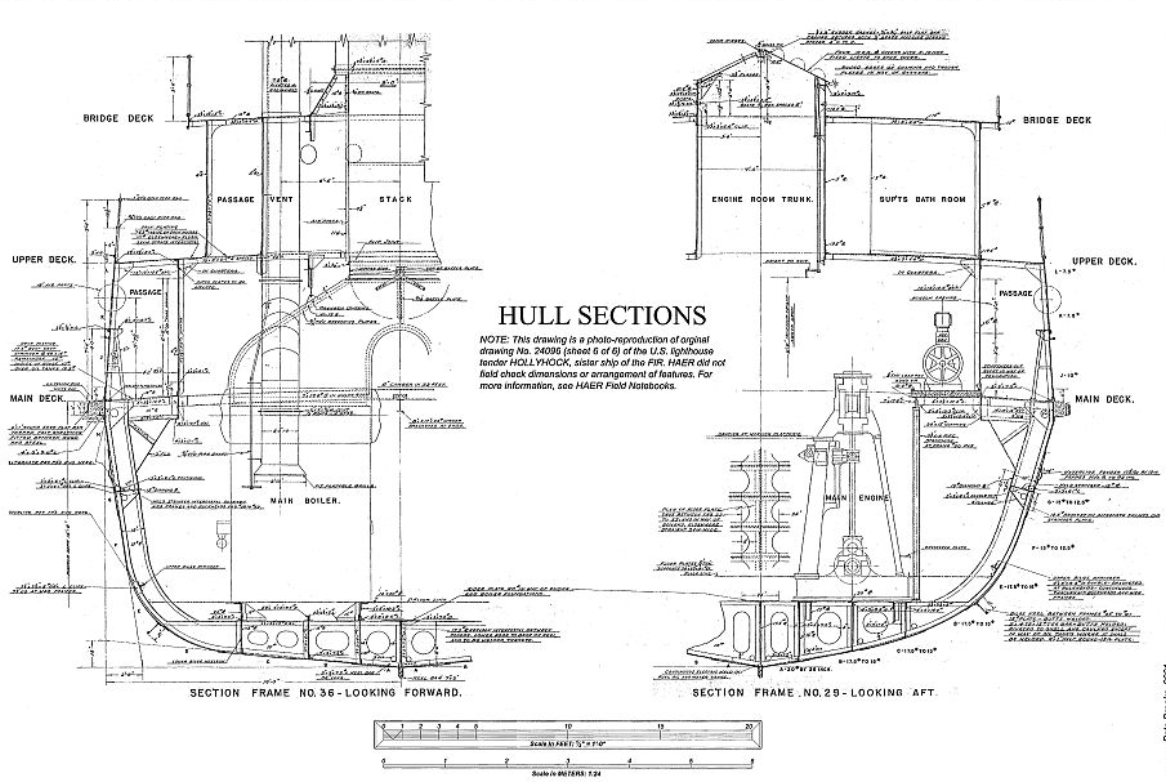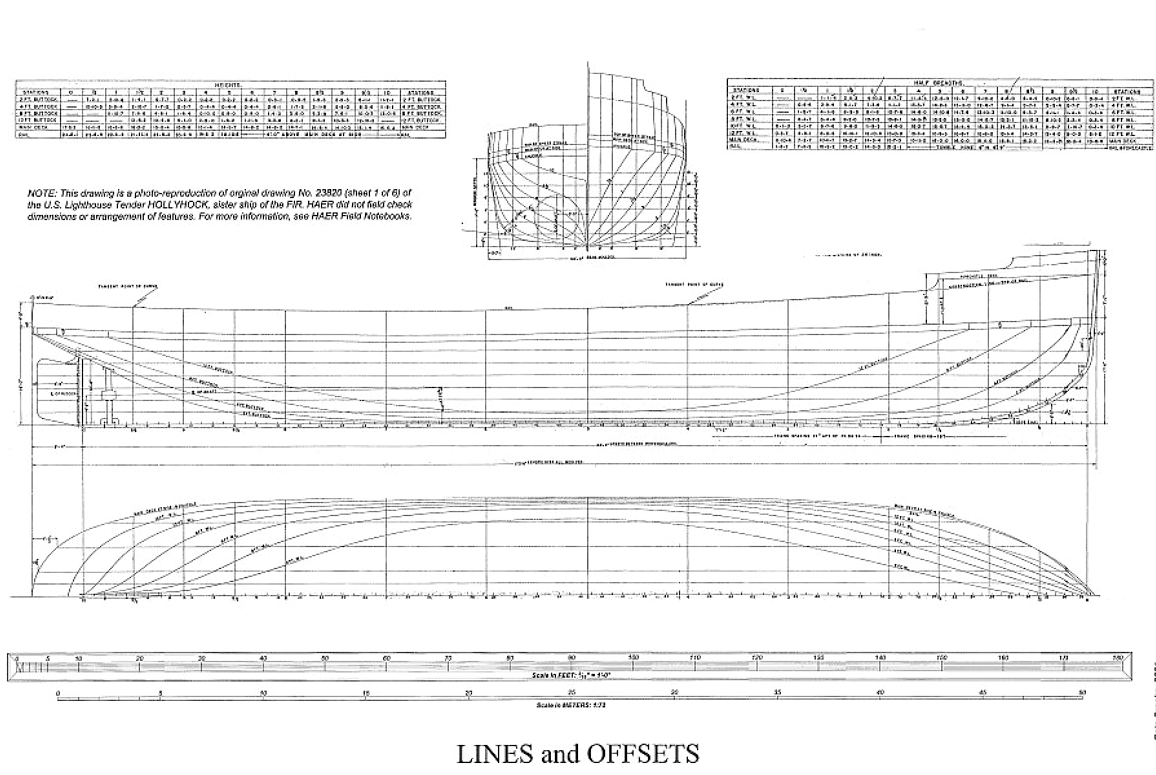United States Coast Guard Cutter Fir would have a long and diverse career. In addition to her World War II duties she took on search and rescue work. So often at sea, she was the best qualified vessel to provide help near the scene of a disaster. On November 4th, 1949 Fir rescued 19 people from a motor vessel Andalucia, which had caught fire off Neah Bay, Washington. On April 30, 1952 she would assist a distressed SS Beloit Victory near Destruction Island; In 1958 Fir escorted USS Yuma to safety after engine trouble had developed while towing USS Tinian six miles south of Swiftsure Bank. And on March 14, 1963 she was instrumental in the search for a downed US Navy aircraft in Guemes Channel.
Recovery and salvage missions included locating a CG H04S helicopter and delivering it to Port Angeles on November 11, 1962, retrieving a USAF T-34 aircraft on July 16, 1965, and on November 28, 1968 fighting a fire at the Todd Shipyard in Seattle. Her last rescue would be a mariner trapped on a burning pleasure boat on Shilsole Bay, Washington. Fir extinguished the fire, rescued the mariner, and saved the boat.
Fir received multiple acclimations throughout her career. She was awarded a Unit Commendation for her work after the 833-foot Arco Anchorage grounded in Port Angeles, spilling 239,000 gallons of crude oil in 1985. As the Coast Guard's longest serving cutter, she was designated "Queen of the Fleet" in May 1988, and her bow painted with gold hull numbers. On October 1, 1990, the Coast Guard's 200th anniversary, Fir was honored with a celebration for her 50th birthday. One year later Fir was decommissioned, and on April 27, 1992 the United States Secretary of Interior awarded her the designation, National Historic Landmark.


